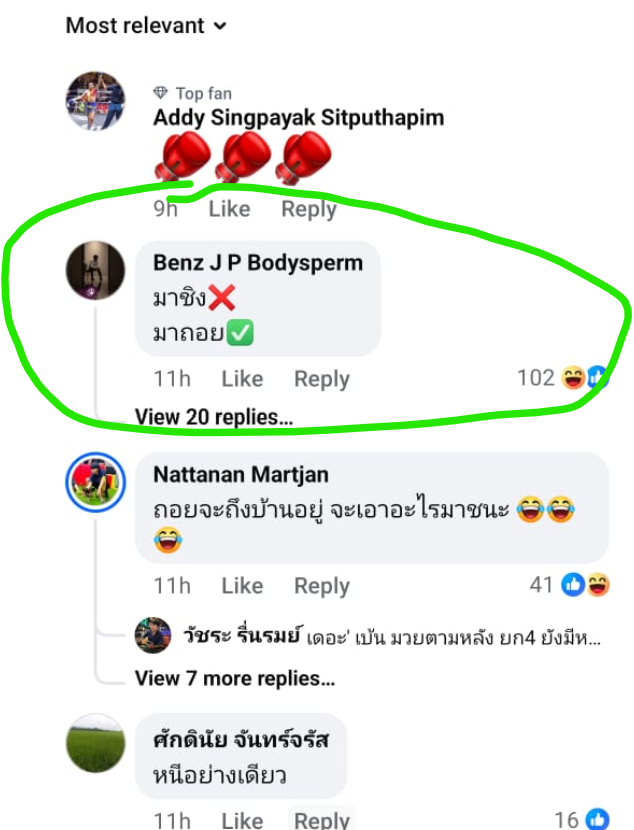All Activity
- Yesterday
-
"He who does not know how to read only sees the differences. For him who knows how to read, it all comes to the same thing, since the sentence is identical. Whoever has finished his apprenticeship recognizes things and events, everywhere and always, as vibrations of the same divine and infinitel sweet word. This does not mean that he will not suffer Pain is the color of certain events. When a man who can and a man who cannot read look at a sentence written in red ink, they both see the same red color, but this color is not so important for the one as for the other." A beautiful analogy by Simone Weil (Waiting for God), which especially in the last sentence communicates how hard it is to discuss Muay Thai with those who don't know how to "read" its sentences. Yes, I see the effort. Yes, I see the power. Yes, I even see the "technique"...but this is like talking about the color of sentences written out at times.
-
from Reddit discussing shin pain and toughening of the shins: There are several factors, and people create theories on this based on pictures of Muay Thai, but honestly from my wife's direct experience they go some what numb and hard from lots of kicking bags and pads, and fighting (in Thailand some bags could get quite hard, almost cement like in places). Within a year in Thailand Sylvie was fighting every 10 or 12 days and it really was not a problem, seldom feeling much pain, especially if you treat them properly after damage, like this: https://www.youtube.com/watch?v=ztzTmHfae-k and then more advanced, like this: https://www.youtube.com/watch?v=mcWtd00U7oQ And they keep getting harder. After a few years or so Sylvie felt like she would win any shin clash in any fight, they just became incredible hard. In this video she is talking about 2 years in about how and why she thought her shins had gotten so hard: https://www.youtube.com/watch?v=XFXCmZVXeGE she shows in the vid how her shins became kind of permanently serrated, with divots and dings. As she discusses only 2 years in (now she's 13 years of fighting in) very experienced Thais have incredibly hard shins, like iron. Yes, there are ideas about fighting hard or not, but that really isn't the determining factor from our experience with Sylvie coming up on 300 fights and being around a lot of old fighters. They just can get incredibly tough. The cycles of damage and repair just really change the shin (people in the internet like to talk about microfractures and whatnot). Over time Sylvie eventually didn't really need the heat treatment anymore after fights, now she seldom uses it. She's even has several times in the last couple of years split her skin open on checks without even feeling much contact. Just looked down and there was blood.
-
AW8MALAYSIA joined the community
-
Kondo Amaya joined the community
-
Matsushita Mari joined the community
-
superjackpot joined the community
- Last week
-
The race for cheaper "grassroots" labor to fill Entertainment Muay Thai cards is on. Rajadamnern vs Lumpinee, trad Muay Thai vs Entertainment Muay Thai. This is the next economic challenge for the sport. Who can tap the rural fighter labor source better, as the trad festival fight culture that has feed the sport for over a century is quickly eroding.
-
mj88 joined the community
-
Aw8 Pro Singapore joined the community
-
Aw8pro joined the community
-
PharaohsMuayThai joined the community
-
Thank you for these insights, I did not know any of the information you provided! Seemingly similar to these commercial gyms buying out fighters from smaller gyms, ONE has bought out the social media representation and global perspective of Muay Thai in a way. RWS is interesting in that aspect of observance, its kinda like the doomsday clock
-
Heard backstage at a trad promotion in Bangkok, Dieselnoi loudly complaining that Thais don't know how to knee anymore, nobody even knees to hurt. Just kneeing for show and points. *This isn't a question of intensity (how hard), its one of technique, and continuity. The knee techniques of Hapalang gym have just been largely lost.
-
What many do not realize is that ONE has so thoroughly commandeered the social media ecosystem of Muay Thai in Thailand (quite consciously, as part of its marketing approach, absorbing trad social media accounts, controlling messaging across all platforms through various systematically means...and quite brilliantly I would say), that many, many New Gen Muay Thai fans in Thailand, who speak no English at all, now have bought 100% into the ONE Entertainment full power smash aesthetic. Demographically much of it is somewhat a new fan base for Muay Thai, but its very vocal in SoMe post comments, and has influenced the older online gen as well. What we in the West are drawn to in traditional Muay Thai is now is ardently being pushed against by a segment of Thai fandom now, even in the trad ruleset. There is a kind of tug-of-war now between the traditional values of superior fighting and the new International smash values, and hybrid promotions like RWS are kind of caught right in the middle, but seemingly for now siding with trad values for the most part. It does mean though that some trad fighters are just going to go in there and smash on trad cards, which is kind of amazing because this change has occurred in only a few short years.
- Earlier
-
madman158 joined the community
-
Thats so upsetting. Whats worse is that its a conscious action for them to have go about fighting like this. While for lots of us in the states or Europe where fighting is just like this anyway its just how you do it, we dont even make the conscious action of how much power you're putting into something, what follows after, and our own composure. It shifts energy away from ones self which is why it seems to muster up so much of the ego in the first place. Self attachment through the reaction of others and the materiality of power is really self degradation.
-
I havent interacted here in a while alot of family stuff going on and a huge burnout hit me as I was forced to hold pads for almost a year, and teaching people when im in no position to be teaching. But to get to the point I just watched a video of myself hitting the bag which I havent video’d myself in forever. I noticed EVERY single kick had a jump on it, and honestly ive always had very good power and balance coming off kicks so this shocked me. I was always told my kicks were pretty as Ive tried replicating the golden kick to the best of my abilities. But ill have to record myself sparring and hitting pads to see if this repeats. Thought Id share this cause I just find it a weird habit that developed, any tips besides being conscious of it to get rid of the issue, is it an issue?
-
Sylvie faced an undersized opponent yesterday in a Boxing match, beyond her control, so on the way home we counted up the number of times in her 280 plus times she's faced someone smaller than her, and it is now 6. And each time it was a no contest bad match. Size differences do really matter. Firstly, it is absolute remarkable that Sylvie's only faced 6 opponents smaller than her, this is a just a very common and in fact pretty pursued advantage for Westerners. Some Westerners are in fact hard to match because they are big, but also gyms that represent Westerners also leverage for size advantage as well. This is something Sylvie just never has engaged in, its an advantage she NEVER wants...in part because she knows what its like to be the smaller fighter, having fought vastly up for most of her career. (This is one reason, among many, that Sylvie has never hooked herself up to a powerful gym or promoter trying to advance her, its the form of the sport to try and find and push for as many advantages as possible in Thailand, this is just how its done...this is often done with the aim of just declaring your fighter unfightable, and retiring, a career arc Sylvie has wanted nothing to do with. The other thing is that size f-in matters. Give Sylvie a few pounds and its an incredible problem. Which means her victories fighting way, way up, often multiple weight classes, just shows how unique and incredible fighter she really is. She overcomes the single most determinative factor in fighting, weight, regularly. Be that as it may, it also was a good opportunity to fight with some size, even a little bit, because fighting up so much really constricts what you are even able to do, or build confidence in. She was able to bring her power down and increase accuracy, hold more relaxation in her ruup, free up her feet instead of having to brace for large bodied strikes.
-
Muay Thai, Colonialism and "Techniques" not a competition, its a celebration There is a lot that is culturally complex in how the West (and others) interact with the traditional Muay Thai of Thailand, and honestly it is worth of analysis and thinking about. It's likely full of contradictions, and doesn't present only a single picture of motivations, but...there is one thing that is pretty common place and intense, and that is the way that fighters, coaches and various purveyors of information on Muay Thai to the West, usually in the form of demo'd techniques, simply present themselves as "experts", as if their knowledge, what they came to is simply something OF them. It becomes the signature of their authority and value, especially in social media contexts where a lot of platform reach comes from "demos" of one kind or another. This is just a serious trend, a pattern. But really it is almost inexcusable when sharing or teaching others not to share where and even more importantly WHO learned something you are demoing from. Almost uniformly, it wasn't something you learned from yourself. This means, with every share you are actively erasing the past, the actual lineage of that knowledge, you are erasing the people who actually knew something more than you, and you are removing their importance for anyone who might be interested in what you are sharing. This is pretty extreme, in that it is quite widespread. One of the biggest problems Muay Thai has right now is that as it internationizes, as it reaches for more commercial markets, so many of its roots are being erased...it has less and less concrete rootedness. And while this may help it spread quickly, charged up by the popularity of influencers and such, soil without roots will just wash away when there is a change in season. The roots are what holds everything together. Further of course, if you aren't naming teachers, krus, padmen and coaches that gave you that bit of information you are undermining the entire hope of Thailand in sharing Muay Thai in the world. You are erasing the very thought that you have to go to Thailand to learn specific things (or, in other countries well educated krus and gyms), the notion that to learn something better or more completely you should go further down the coaching tree, further into the roots. This was a huge motivation for pretty much everything Sylvie has done. Her path started learning kind of psuedo-Muay Thai from a strip mall gym that had a lot of TDK in the mix, but there was the photo of a guy on the wall who had taught the head coach of the gym his Muay Thai. This was "Master K", Sylvie's first Thai teacher. What do we do? We go to the teacher of the teacher. And this is exactly what lead us to Thailand, eventually to the Muay Thai Library documentary project itself. It's been an instinct from the beginning, but also a motivating value. Shine the light backwards. The teacher always will know some things the student will not. Because the teacher's knowledge comes from something very complex, a lived experience that is full of details and reasons and contexts that don't get filtered down into the particular technique. The teacher is full of richness and intensity...and its our job to raise up and preserve the teacher, to pull them into the present, and thus into the future. And this should be done with every share of technique possible. It should be just regular, not only etiquette, but also passion to bring the sources of what you know forward with you, and build a picture of knowledge that immediately causes people to look past you, before you, when they learn something. The krus, coaches and padmen need to be known. If you've been to Thailand and trained seriously you already know that many Thai padmen in gyms in some ways know more much more about Muay Thai than you'll ever know, even if you are a very experienced fighter. Muay Thai needs for us not to erase its own past, it needs to stop cutting off the vines below the flower. It is just amazing to me that so many shares of technique do not automatically tell of where it came from...who it came from. This doesn't mean you have to authorize your knowledge, because you got it from someone more famous, or more esteemed than someone else. As I said, there are so, so many in Thailand who are just brimming with knowledge who are almost completely unknown to but a few. Common padmen just walking experts of Muay Thai, padmen who don't have even much social standing in their own gym. Lift these names. Inspire people to connect to your own knowledge tree. It's not a competition, its a celebration. There are many krus that we've documented in the Muay Thai Library who are not or were not social important krus or padmen, but they are full incredible knowledge and wisdom. Raising their names, and sharing their muay is absolutely vital, and can change their lives as well. There are so many example of this, even very famous names now. Sharing can be something as simple as: "Point your toes up on checked kicks, this is something learned from Kru Big at Sinbi [made up name] and a few other places as well" or, "Hook-lowkick is a great go-to combo, this is a mainstay of the Sitmonchai style started with Kru Dam" or, "Kru Toi always told me to use the teep more in fights, and its something I've had success in when I did it". It's just a way of talking about advice or demonstrated knowledge. Also, if this became more regular it would undercut just people cribbing demo advice from other content sharers, other influencers or breakdownists of varying quality, something that thins out the knowledge base. There isn't must wrong with learning from other sharers, but maybe just mention that you have? Create and build lineages, and inspire others to do the same. Muay Thai itself needs this.
-
I put together this compilation of little notes Sylvie has taken in a stretch of training and sharing Muay Thai, and was surprised that there is a full 30 minutes of these. I'm just struck and really almost shocked at how much knowledge she drops and the nature of it. These are not "demos" of techniques, but looking beneath or within techniques, something that comes from being closely connected to techniques for many many years, and her self-transformation. I can't think of another person in the world who could drop notes like this, of this much variety, because this just comes out of her path. These are like reading notes of Muay Thai. It's a very interesting, and kind of inspiring level of knowledge. She's a walking encyclopedia of experience and knowledge. That foot-drop taught by Manop is just this kind of thing. It's not "technique", its a piece of a technique, but its related to a generative principle that informs all sorts of other techniques, and even can touch all of your Muay Thai. There are so many of those.
-
Dropping this PDF link on market dynamics and FEP: Market Self-Learning of Signals, Impact and Optimal Trading: Invisible Hand Inference with Free Energy Igor Halperin, Ilya Feldshteyn If I ever have the time to develop more rigorously my thoughts about how the diversity, efficacy and richness of Muay Thai developed out of rural "wisdom of markets" gambling festivals:
-
Padwork porn. Ugh. It hurts my eyes. I'm not sure I've ever learned anything instructive or interesting about a fighter by watching a padwork video. Lots of things to learn about the pad holder...sometimes. Watching Karuhat on pads would never let you know what an electric, absolute GOAT of a fighter he was.
-
dindaagustina joined the community
-
I have to say the whole "Sport's Science" invasion of Thailand's Muay Thai, including both the real and psuedo-real, as well as outright con manifestations, as it comments on Thailand's Muay Thai, situating it as somehow primitive in its knowledge of itself, less efficient, or non-ideal...just strikes me as a vast colonialization. A lot of this in the Strength and Conditioning market place of internet ideas. Experts of every kind who are detached from the very notion of craft and artisan knowing get not only lost in the abstraction of their principles, but also in the commerce of their identities a lot of the time. And, quite often, they do not even understand the principles or dynamics that actually win Muay Thai fights...they have instead a kind of two fold assumption: The faster, stronger more enduring athlete will just tend to win...and, secondly, the cartoon (and often dead wrong) understanding of the actual physical characteristics that trad Muay Thai draws upon, then shapes that overall imaginary picture of physical superiority. To indicate just how far off this whole approach is - and I don't think this is an exaggeration - probably being strong, fast or enduring, each of which is less important than being relaxed (which actually makes you performatively more of each of these), which is essential to trad scoring and superiority. And, the usual S&C approaches to each of those tend to actually produce the opposite of relaxation.
-
Not to make a religious point, but rather a cultural one, this picture of "Buakieow" Jalili Barnes in victory is also an interesting instance of cross-cultural expression and value ideal. Jalill I believe is a fundamentalist Christian of some kind (sorry to be vague, it's only something I have cursory knowledge of, and I'm not sure how these denominations refer to themselves) and is known for his adherence to a much more "traditional" Muay Thai path as a farang, mostly shunning entertainment Muay Thai promotion and instead testing his metal in the trad stadium circuit. He just fought for, but did not yet attain the Omnoi belt. Muay Thai itself, in Thailand is cross-cultural, or mixed cultural on the religious front as the South features prominent Muslim fighters through out much of Thailand's history, and who have signaled their faith in the ring ceremonially.
-
Bookmarking this here because I'd like to write on this. A very important passage on technology and techniques that unfortunately is probably crypto-racist and childizing, but that still provides important concepts on craft and artisan knowledge that help in understanding the traditional nature of Thailand's Muay Thai and how it resists appropriation, from Simondon's On The Mode of Existence of Technical Objects (1958). The knowledge is group bound and initiation oriented.
-
Heard that Cambodia has closed down the booking of Muay Thai fights, which were a pretty big alternate avenue for trad style fighting opportunities for a lot of Isaan fighters, and farang too, paying better than many BKK fights. It was a somewhat lessor known alt trad Muay Thai scene. Seems like the ideological battle of Muay Thai, nation to nation, is heating up. The border near Ubon is very contested right now.
-
Golden Age styles and techniques are only going to survive and surface in fragmented, incomplete ways, but it is worth noting that as a tall fighter Mongkutpet deploys an advance that is very close to that used by Dieselnoi at times, with the bouncing lead league, and a long guard. She teeps out of this extended denial of the "middle", as Dieselnoi sometimes did, and she's mixed in a little jabbing action, or sometimes just phantom jabbing high, to keep the eye passing between low and high. This is honestly probably the most "Dieselnoi" a fighter has approached a fight of today, as I've seen, which is really cool. She is missing some of Dieselnoi's spider web pressure of corralling footwork, which he was really good at, as well as his trademark devastating knees when he got you on the ropes, which really just finished fights, but she is very much in the style of advancing long that Dieselnoi employed. Again, very cool to see it survive and be forwarded. The whole fight below. I believe Mongkutpet won every single round, from every single judge (but 1) in what really felt like a much closer fight. The reason for this is that her long guard, Dieselnoi march controlled the middle zone of fighting, neutralizing the zone where Entertainment trends are trying to produce most of the "action". In fact it neutralized both the mid- and the far zones. Duangdawnoi has modified her style a bit to really amp up that middle zone action, in an Entertainment style, put a lot of visible "power" into her striking, but Mongkutpet's Old School leg-bounce just took away two zones, and her height and comfort in the close zone allowed her to manage the scoring there. It produced a lop-sided scorecard in an energetically contested fight. Mostly once Mongkhutpet had eliminated the middle zone the only jeopardy remaining was Duangdaonoi's left elbow on entry (the transition between the middle and the close zone), which she's very good at...but ended up having to throw at volume because it was the only path the swing the fight. If it had cut maybe the fight changes a little bit? A few landed, but I'm not sure it could even have done that. Mongkutpet just had to keep discipline and her right hand up. All in all a strategically very sound employ of style by Mongkutpet, with a great call back to some of Dieselnoi's characteristic march technique. the graphic of the 3 zones: If there was a path to victory for Duangdaonoi, in my opinion, it would be to throw off the Entertainment style and go back to her strong history of deft footwork, light-footed pivots and quick scoring counter kicking. Forget the full power punching and instead become a drifting, flexible defense fighter controlling space with backwards movement. In such an approach she would score lightly, but she would deny scoring to Mongkutpet, and even more importantly expose her very linear style. By going back to the rope and waiting she basically allowed Mongkutpet a straight line to her space of dominance. Instead, you'd want to expose, or produce the feeling of something robotic in Mongkutpet's Dieselnoi's long attack, make it look like it was only on one track. But, this would require moving back into the traditional style of the femeu fighter, of which Duangdaonoi is quite developed. The femeu fighter tries to create a visual contrast which caricatures the opponent, classically. Deft femeu retreat open up the middle and long range zones of fighting, and denies the closest one...but, I'm not sure how Raja refs would judge such an approach. You would have to dominate with it to overcome any potential bias...but, I think she's kind of skilled and experienced enough to do so.
-
In the aftermath of the Muangkutpet vs Duangdaonoi belt fight interestingly on a page that feeds a lot of ONE viewership comment, you get a negative comment on Duangdaonoi for continuously retreating back to the rope: This is one of the subtle sadnesses of the ONE influence on trad Muay Thai. Duangdaonoi actually was a pretty high level fast-twitch femeu female trad fighter (Sylvie fought her many years ago and got bloodied quite badly). Her skill set trended towards accurate, fast femeu counters and the management of distance. One of the telling changes in her style is the attempt to visually sell-out on every single strike, to throw it as hard as possible, even with some dramatic "umph" to it. One suspects the reason behind this really is likely the entire aggro affect change that ONE has brought to the sport that has rung out across the rings and promotions of Thailand. You want this kind of aesthetic "violence" being expressed (which is really quite contrary to the trad rhythmed expression of control and SOME punctuated violence or explosion at the right time). She seems to have changed her muay to fit the aesthetic (and in throwing with so much intensity over and over, probably lost a lot of accuracy). But...this is the thing...its not enough for the Thai ONE fandom crowd. They want not only fulltime 120% striking, they want you to continuously coming forward. They want trade, trade, trade. It's actually amazing how much Duangdaonoi has modified her style to fit into the new highlight-driven versions of the sport, and least to my eye. She used to feature a few explosive reverse elbows in a fight, but the majority of her style was distance control and fight management, a careful art of space, coupled with a very difficult to defend lead (openside) kick, which she would double or even triple up on. Now we get a fighter who could possibly throw 20 elbows. She seems to be trying to give the new fans what they want. She was in the lowest weight class so she wasn't going to be a "power" fighter in style, but clearly she's made herself physically much stronger. Big, full-bodied clinch throws. But its never enough for Thai ONE-inspired fans. They want that red meat. Mongkutpet on the other hand had brilliant, old school approach that was distinctly ANTI trade. Don't trade at any cost. She basically fought with the old Dieselnoi approach, in long guard and bouncing, teeping lead leg. Long I've argued that the way that Thais can beat "Entertainment" ONE style fighters, especially foreign ones, is to just refuse to trade. Mongkutpet just marched Duangdaonoi to the ropes...and then ground out a win with her height and some knees. This is the perfect anti-trading approach to opponents. Fight the fight where you have your advantages. But really I'm posting here about how its never enough for the new Muay Thai fan. It wasn't enough that Duangdaonoi threw everything with all her might. She has to march forward and trade. She has to fight "like a foreigner". This is just more combo-itis that is spreading like an invasive species. Duangdaonoi fought with tremendous heart, and to the best of her abilities threw with as much Entertainment style as she could. She put all of it out there. Back To the Ropes Art I should of course also add, retreating back to the rope is the Hallmark of Thai combat sport superiority. The greatest fighters in Thai history did much of their work back at the rope. If you want a prime example, check my notes on Somrak vs Boonlai:
-
One of the most interesting illusions about ONE and Muay Thai was that it somehow had discovered or created a "successful" business model for Muay Thai. It was "giving customers what they want" and marketing it in such a way that then the "market" was decided and rewarding their version of the sport...but, notably, ONE has never turned a profit. The illusion was that this was a successful business plan OF Muay Thai. Reportedly ONE in general has lost 350 million dollars before they hid their books a few years ago...so maybe 500 million overall? That's a lot (much of it not Muay Thai oriented, as the promotion really was an MMA aimed promotion for much of its orientation, and Muay Thai was really a tertiary concern in the beginning). It has been a very successful business model, but not in the "for profit" sense of creating a great product that customers want and then selling it to them, to make money. It's been successful as an investment raising entity, which is a very different thing. In these terms every fight, ever highlight, every article that has been seeded, every Instagram share its generated through careful circle construction is a commercial, a commercial TO potential investors...much less to potential customers. It created the impression of a very successful business, but a business that continually has to pump itself. This on it own has actually had a lot of positive impact on the sport, even though it has eroded so much of what makes Thailand's Muay Thai an actually unique potential product to the world, likely damaging its long term economic viability. It has introduced advanced marketing techniques that make large digital footprints in very niche digital ecosystems, which alone speaks to a certain potential viability that was not tapped...but, it also likely has taught that Thailand's Muay Thai has to be a supplemented, likely government sustained sport as well. Amazon is exiting the ONE Deal, reported, because the Asian UFC dream (nothing really to do with Muay Thai) is now a dead end. And the net losses in Thailand (2023) show up as: Revenue - THB 95M (USD 2.9M) Expenses - THB 366M (USD 11.3M) Net Loss - THB 288M (USD 8.9M) The above numbers aren't really a disappointment, its just that this is the business model. You have to put negative money into generating the image, and in pumping the pay and bonuses. The question is though, if one is going to take very substantial losses, are there better, more efficient ways of taking losses to foster the health of the art and sport. I suspect that the secret recipe of ONE's Muay Thai has almost nothing to with turning Muay Thai into an aggro form of Kickboxing (Kickboxing itself never proven a profit making product on the International level, I don't know why people think its this is the "it" factor), it is the way it poured negative money into a very advanced marketing and comms control image creation project. This is actually the lesson. One could have done all the same marketing stuff, made all the message control and bonus pumping around traditional Muay Thai, and kept all the stars of trad Muay Thai in the sport and had even a BETTER impact on the sport. It wasn't the product being sold, it was the selling of the selling. And in its way ONE then by putting pressure on Rajadamnern and Thai promoters trying to stay afloat to modernize their approach, much of it to good effect. But, still, the confusion is that it was the "product" (the deskilled, aggression-jacked version of a product) that was driving the whole thing. It's not the product. It was generating the image of success and enthusiasm around the product. Trad Muay Thai is filled with uniqueness - and if you keep the skill level increasing, instead of lowering it so farang can win - that is ripe for these kinds of marketing amplifications. Traditional Muay Thai has so many qualities that can drive international interest and eventual passion. You don't have to deskill it. You don't have to erase - and in fact in the long term you shouldn't erase - those qualities. That's the true Golden Goose. The advanced skills and the cultural inheritance and meaning withing the traditional form of the sport.
Footer title
This content can be configured within your theme settings in your ACP. You can add any HTML including images, paragraphs and lists.
Footer title
This content can be configured within your theme settings in your ACP. You can add any HTML including images, paragraphs and lists.
Footer title
This content can be configured within your theme settings in your ACP. You can add any HTML including images, paragraphs and lists.







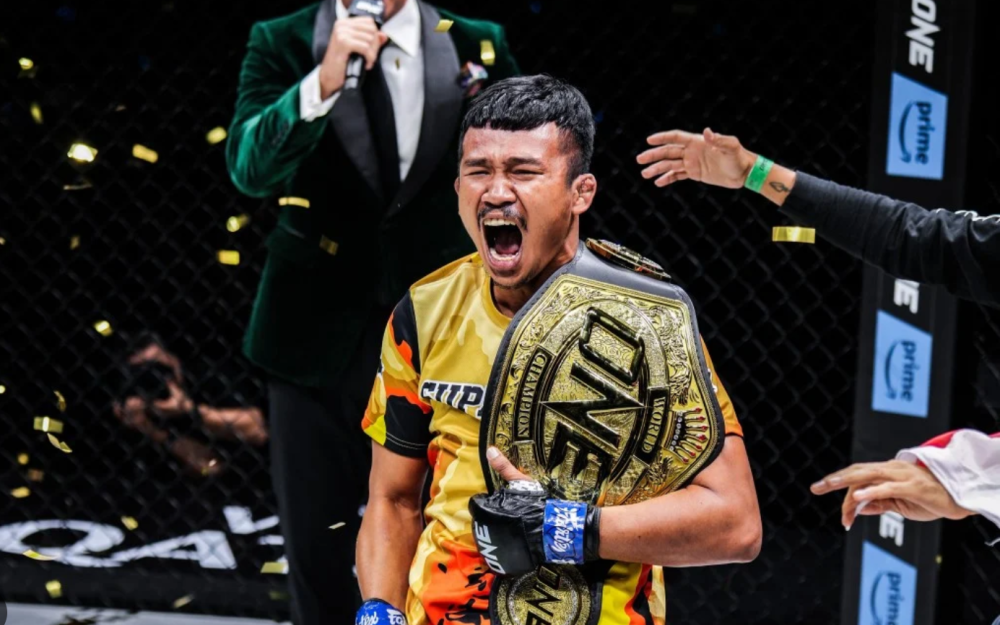
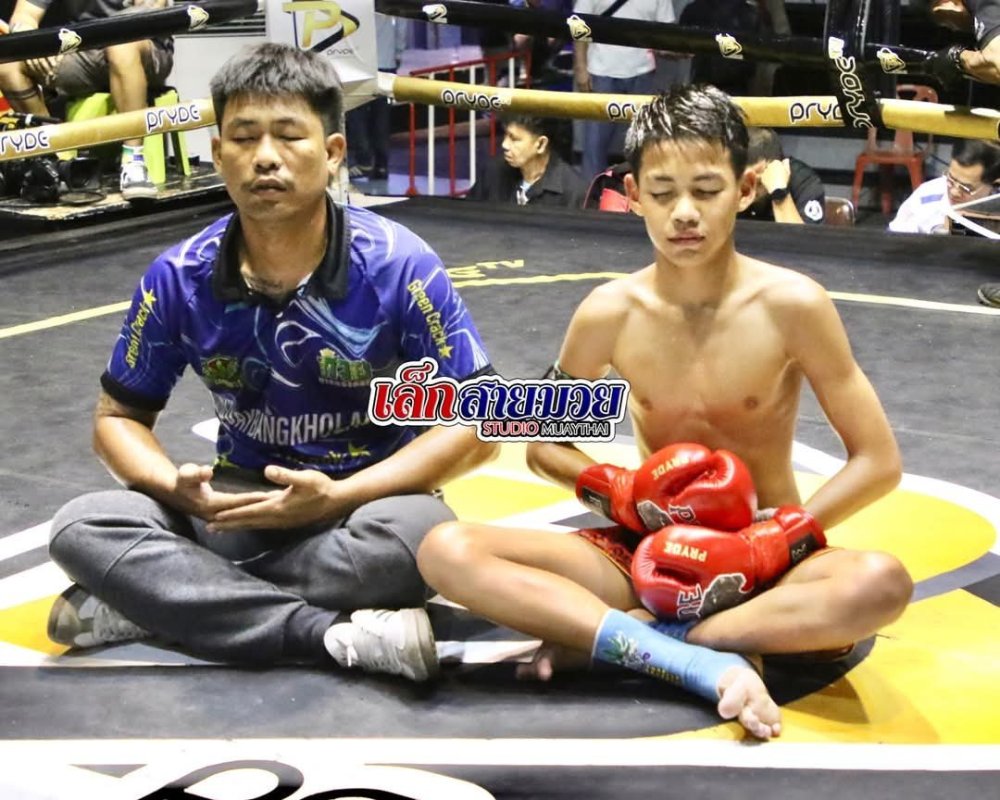
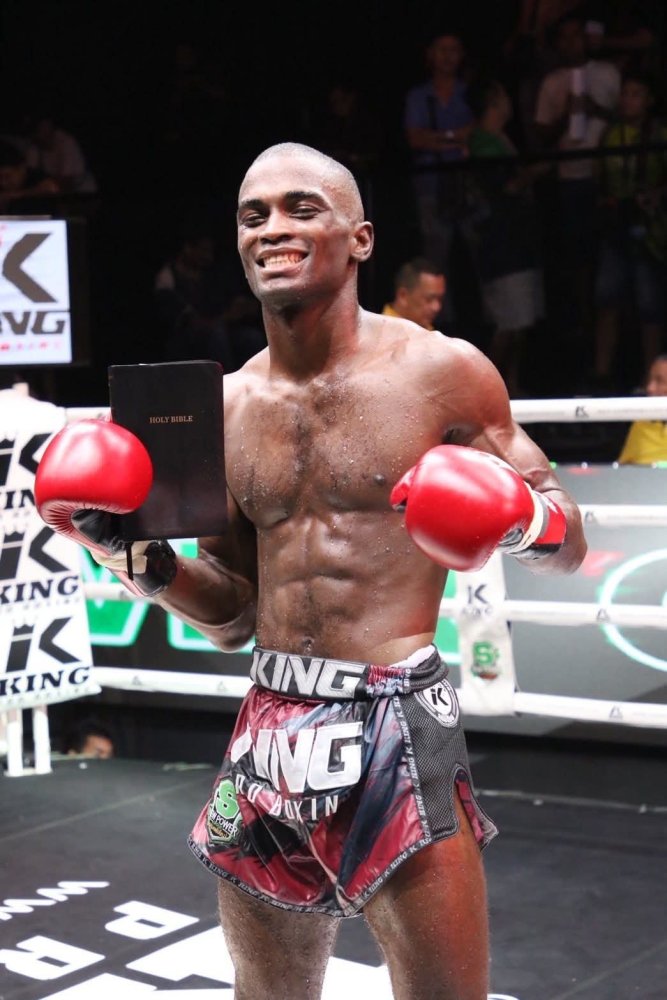
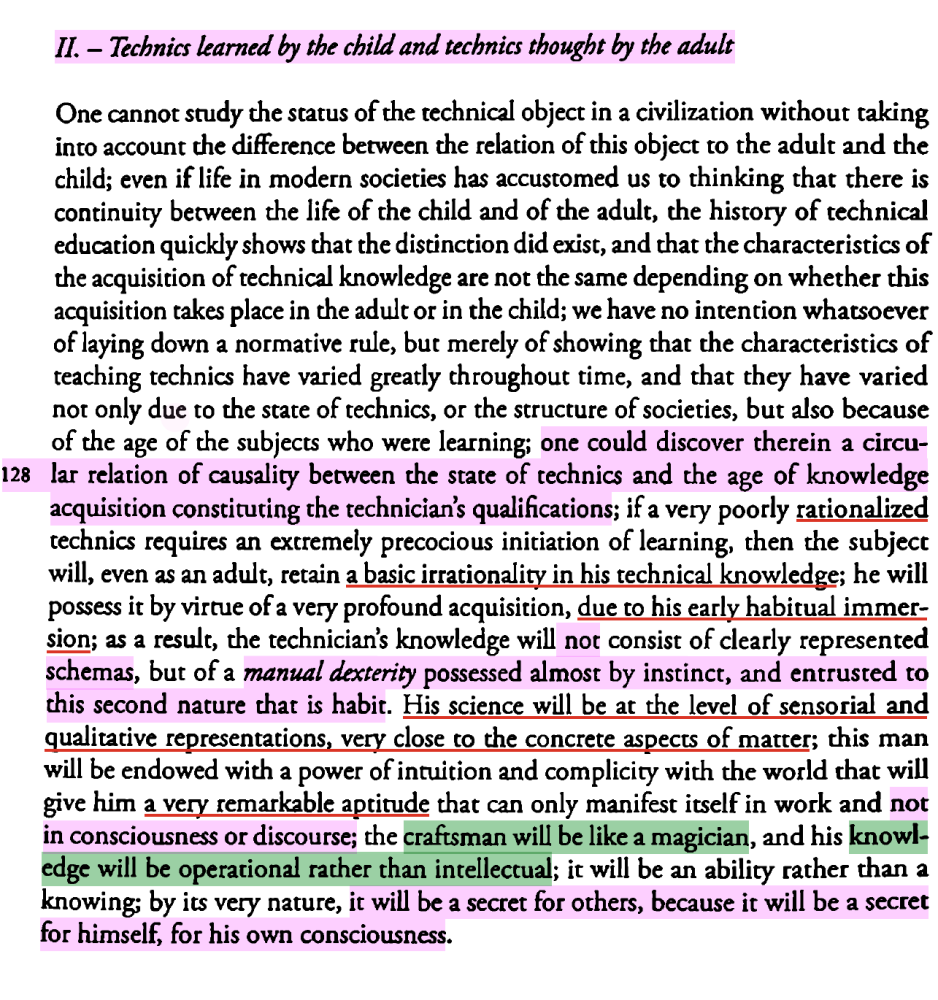
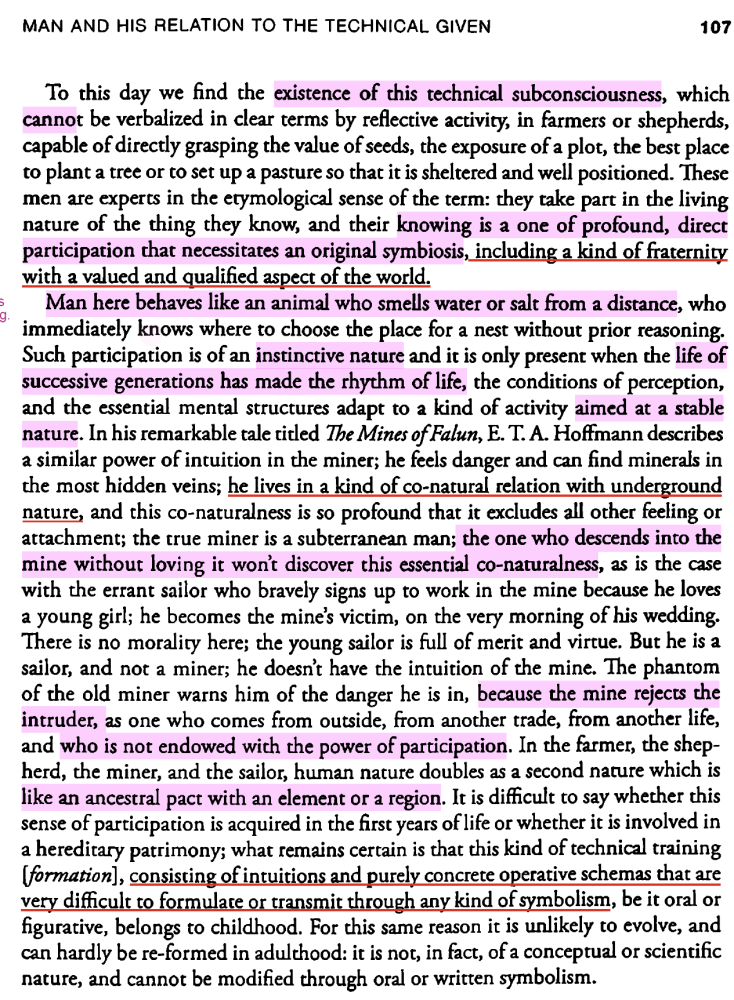

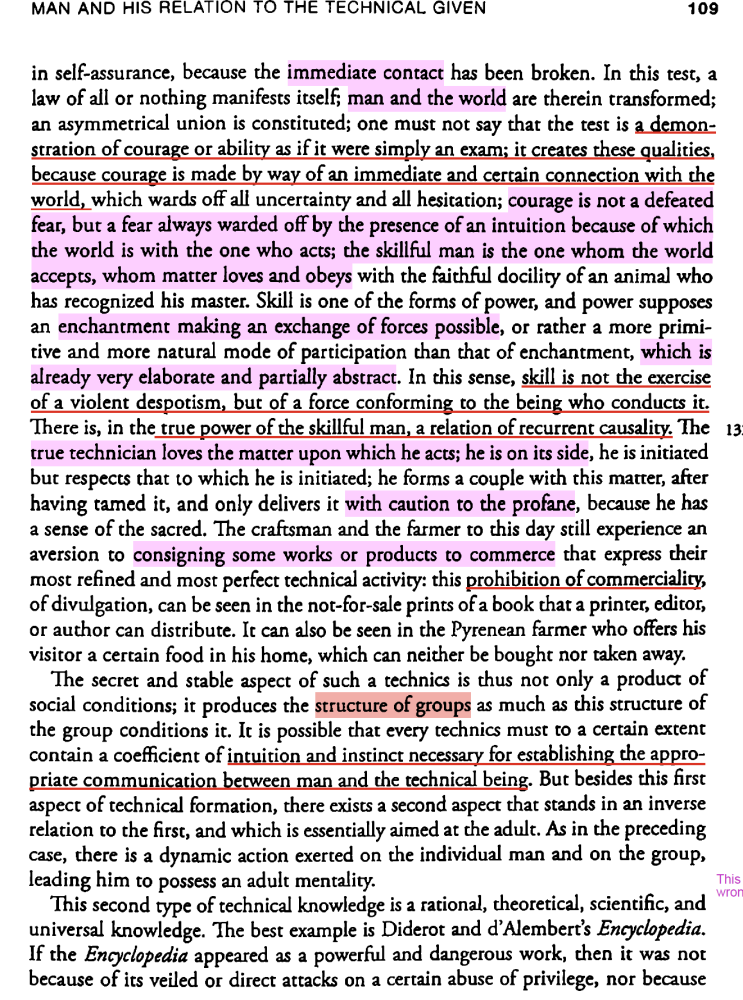
.thumb.png.7aee4fb97653a5b2f3bc1a618458d1b2.png)
